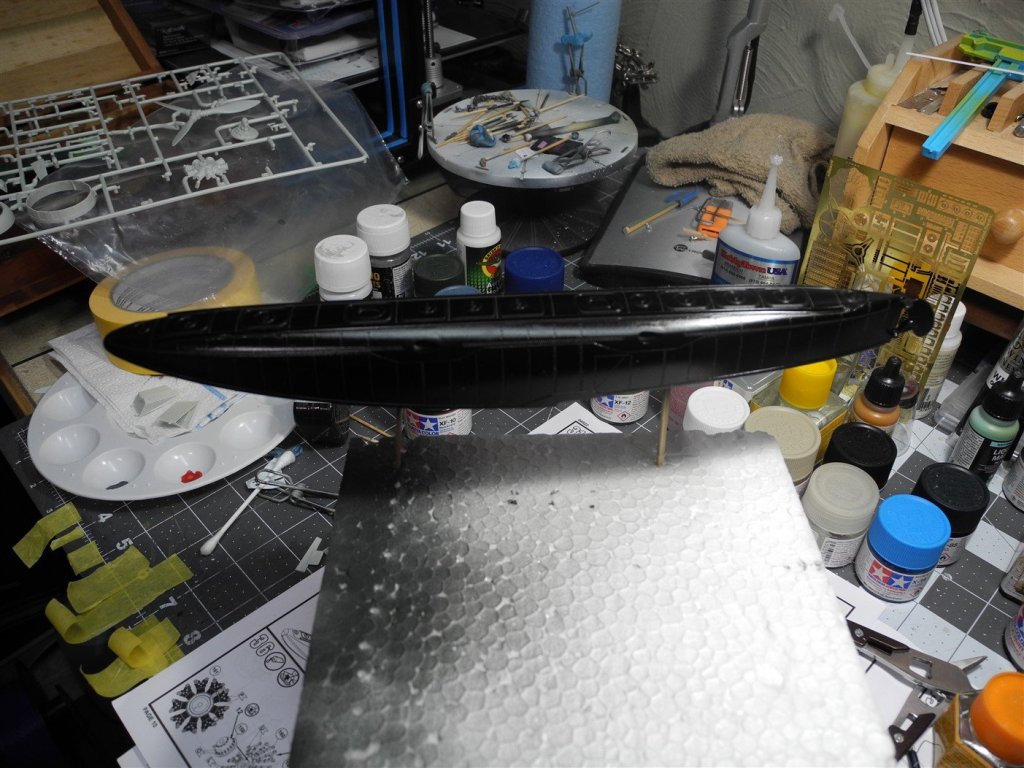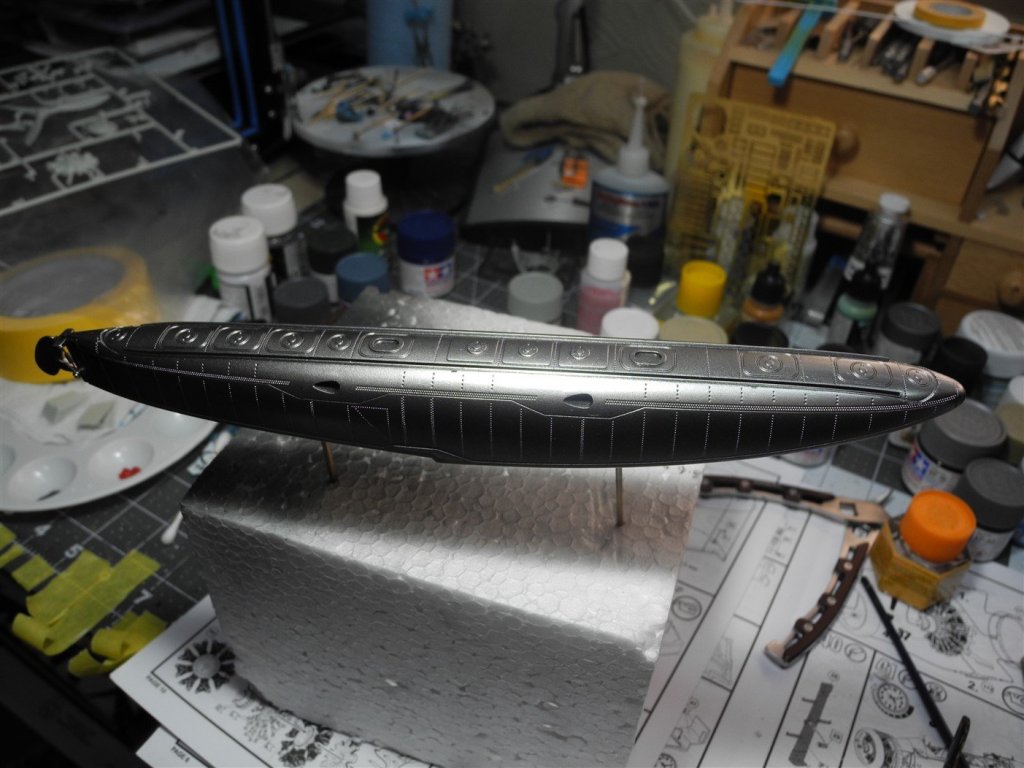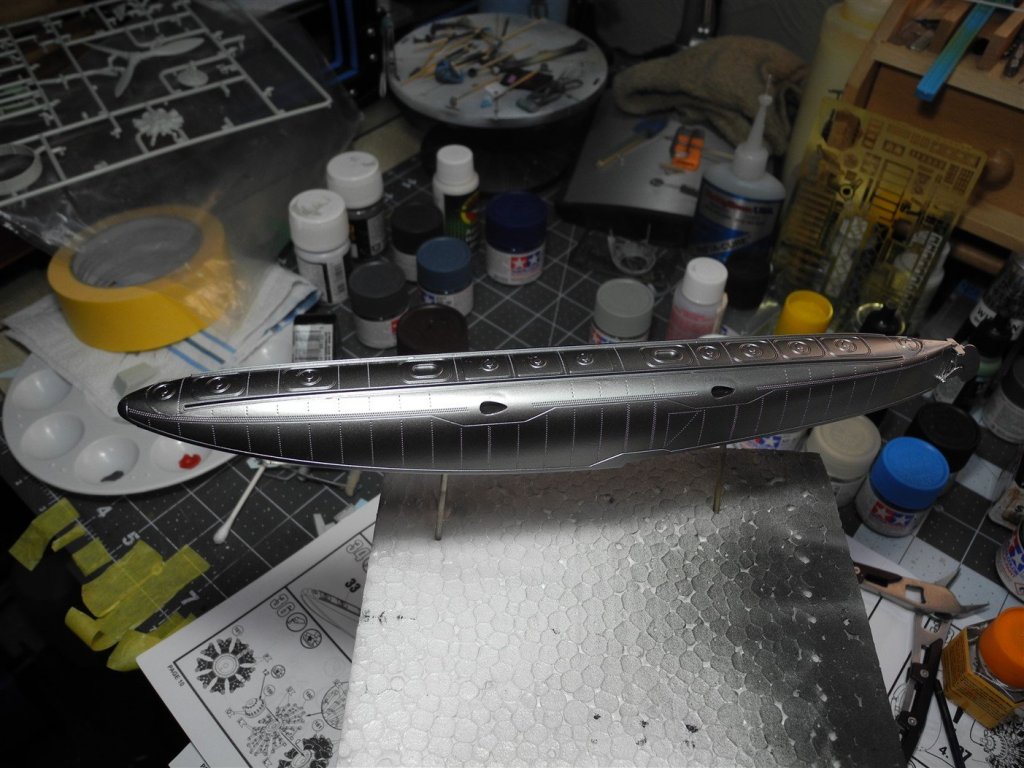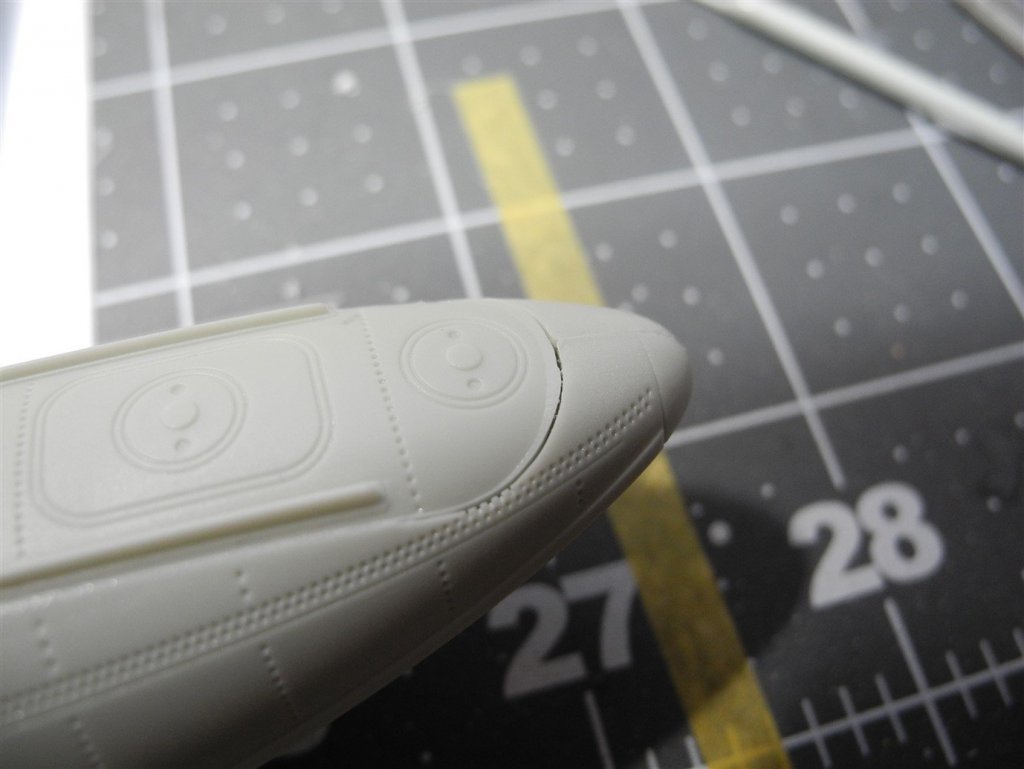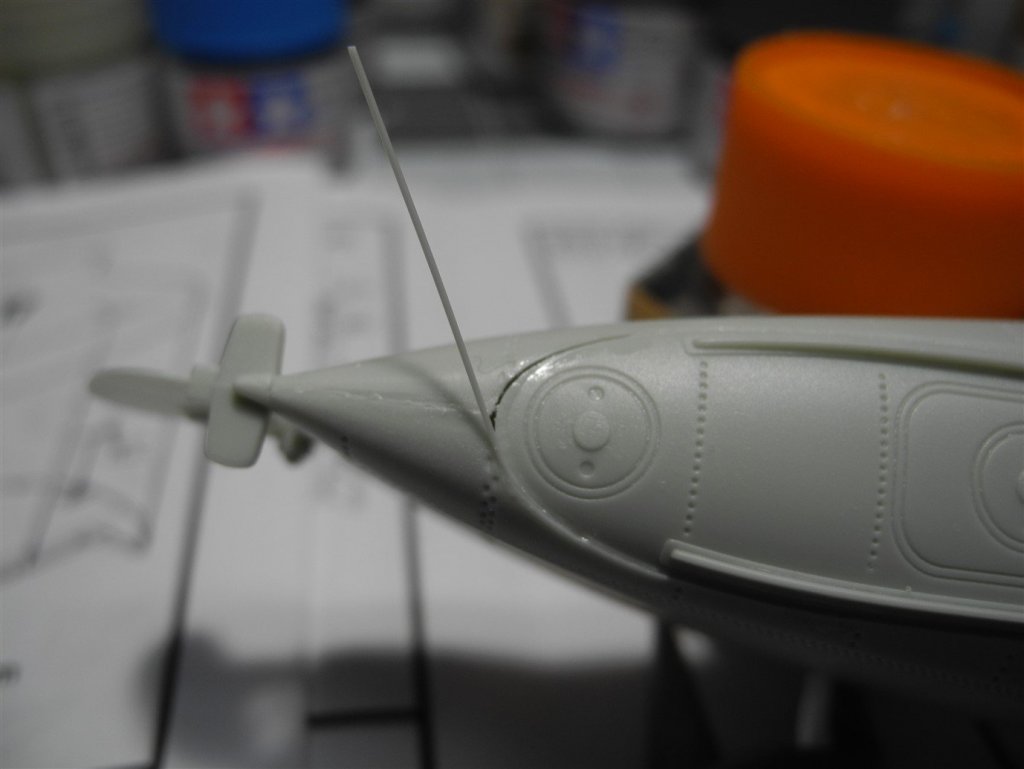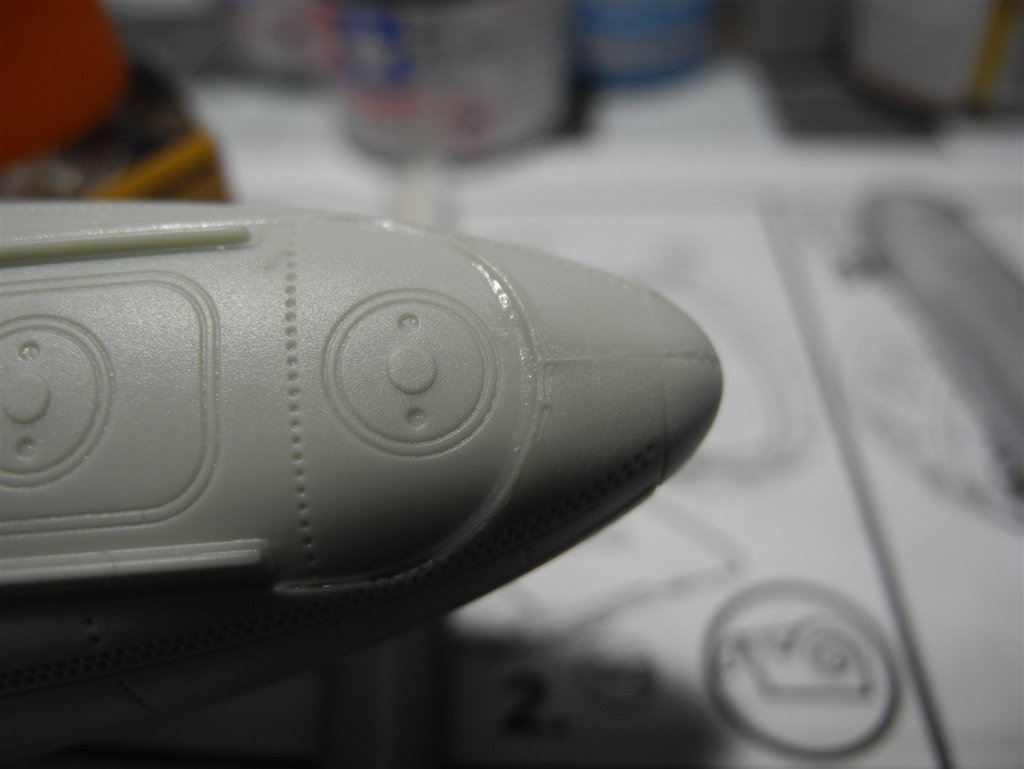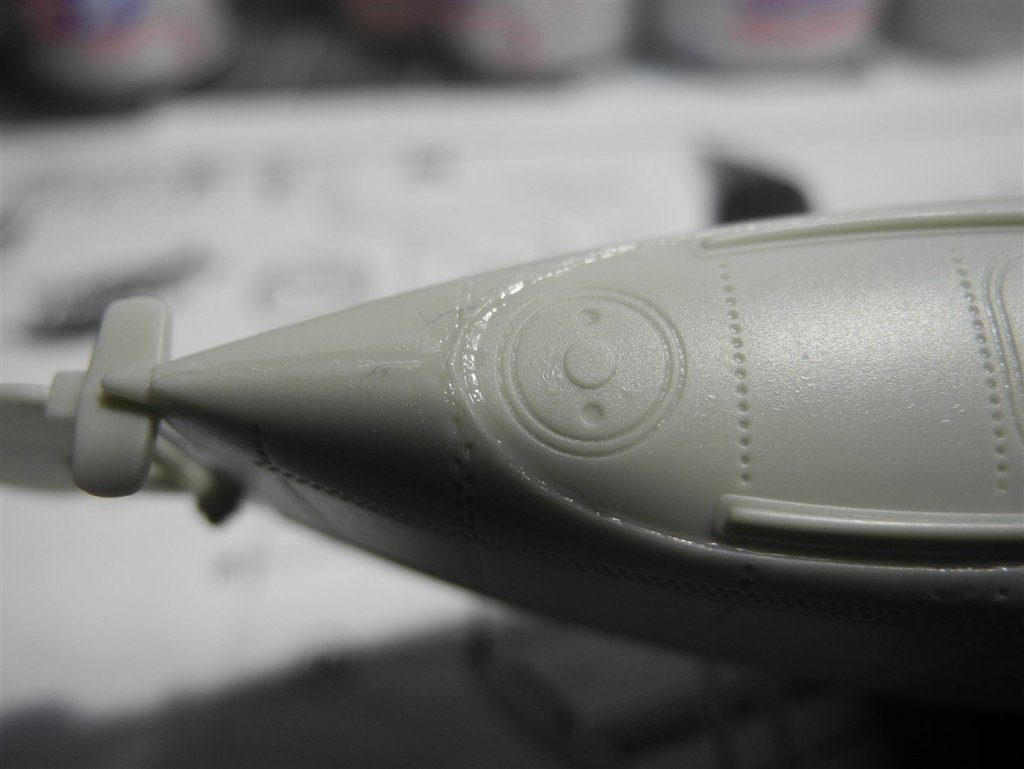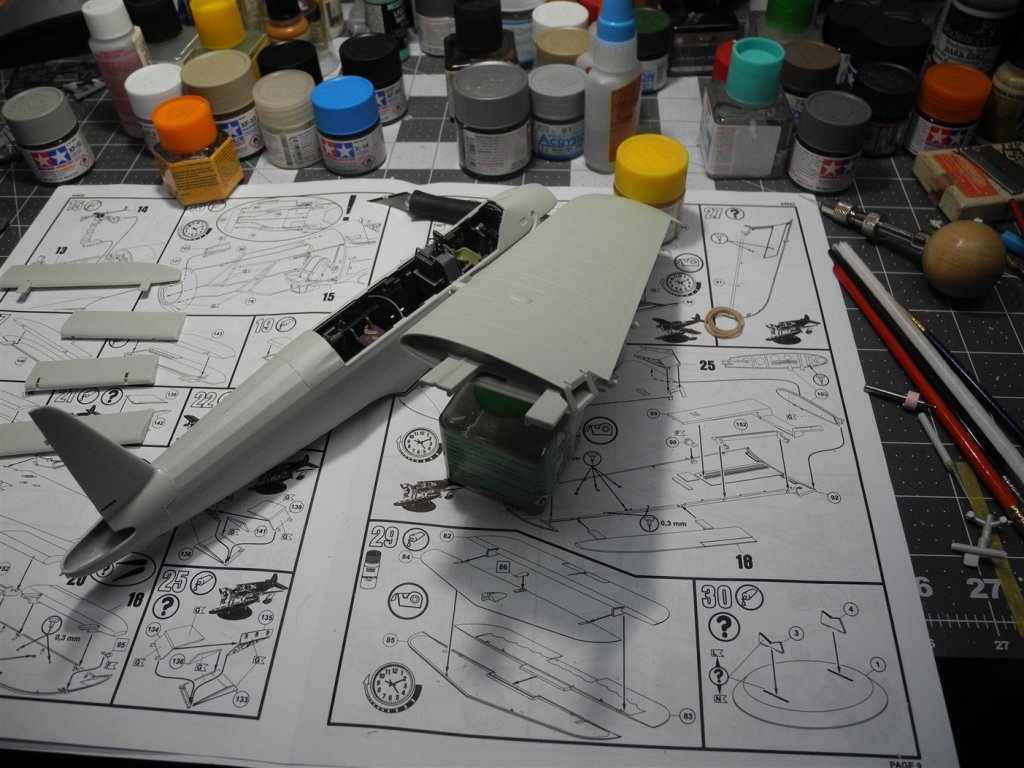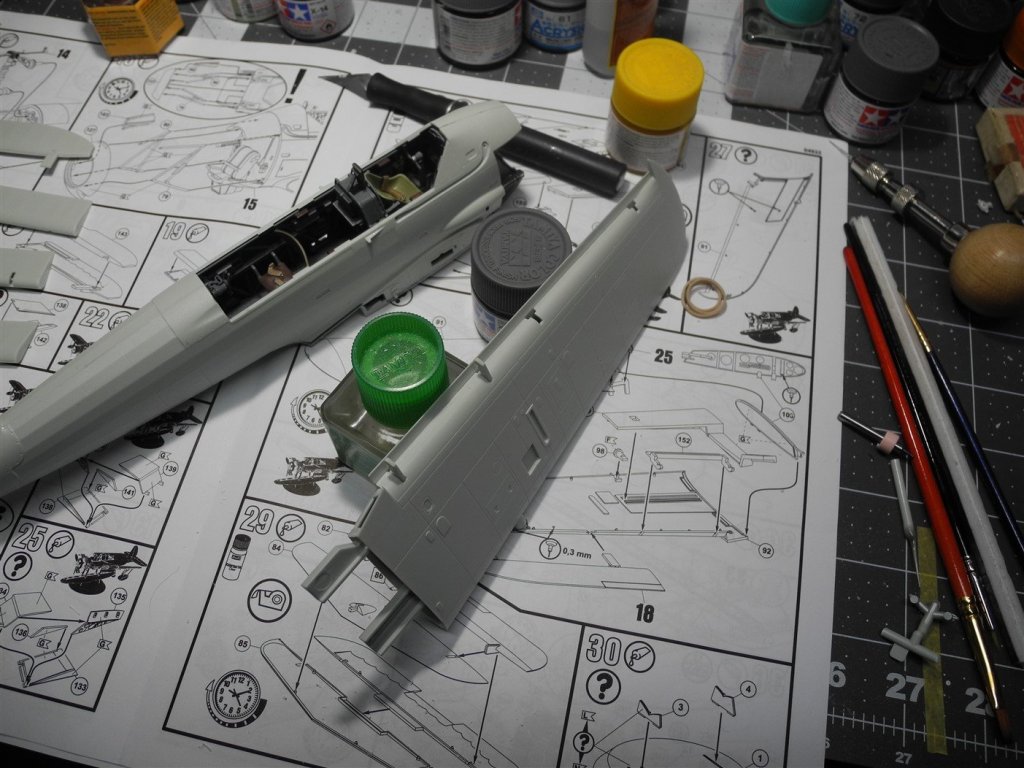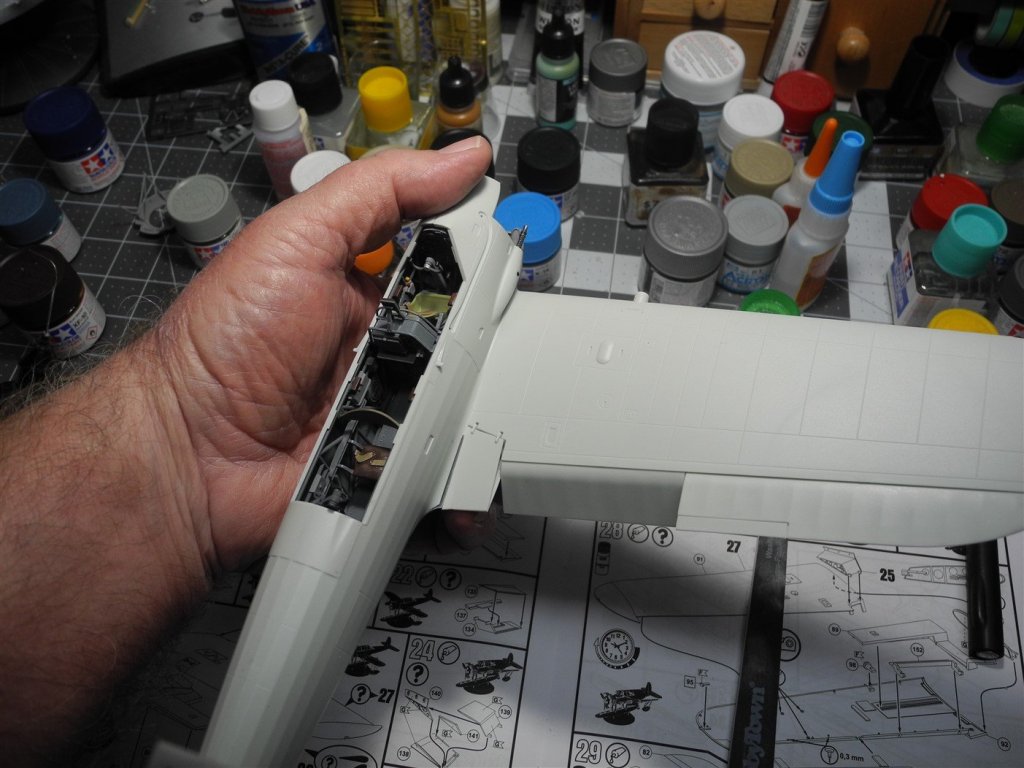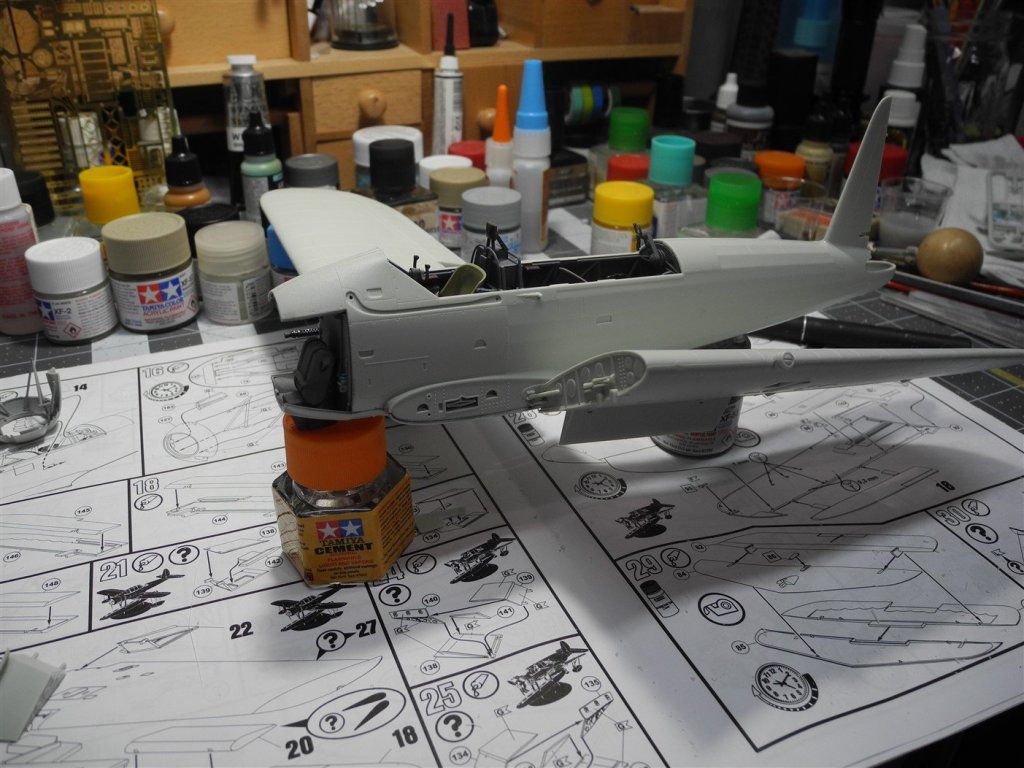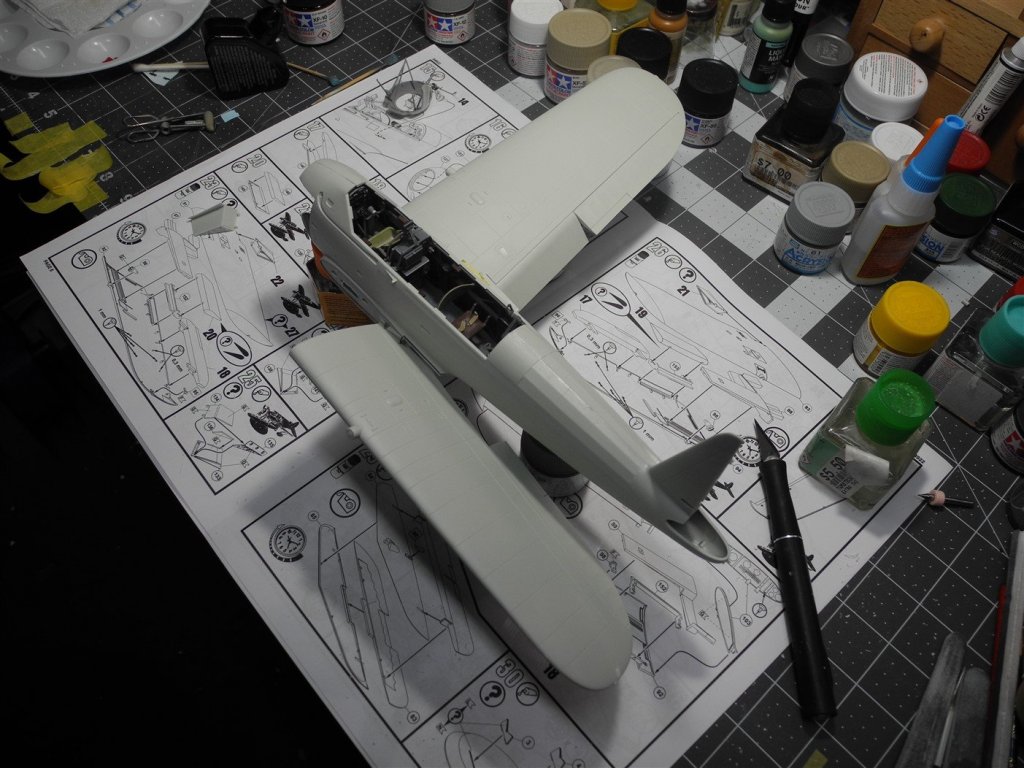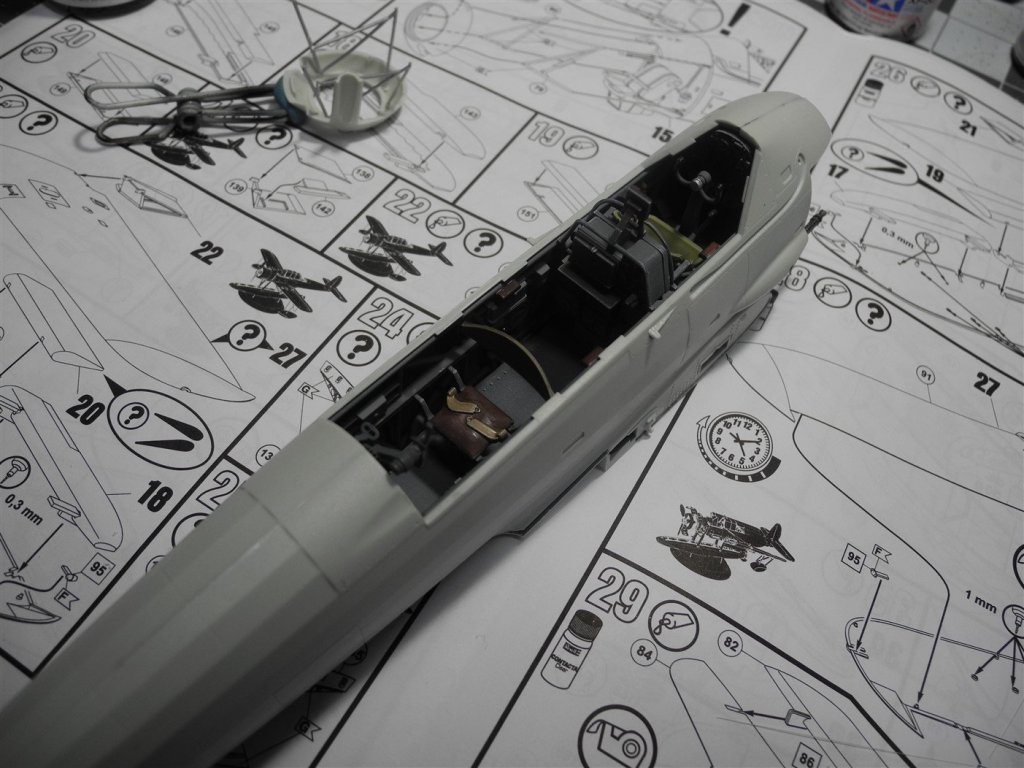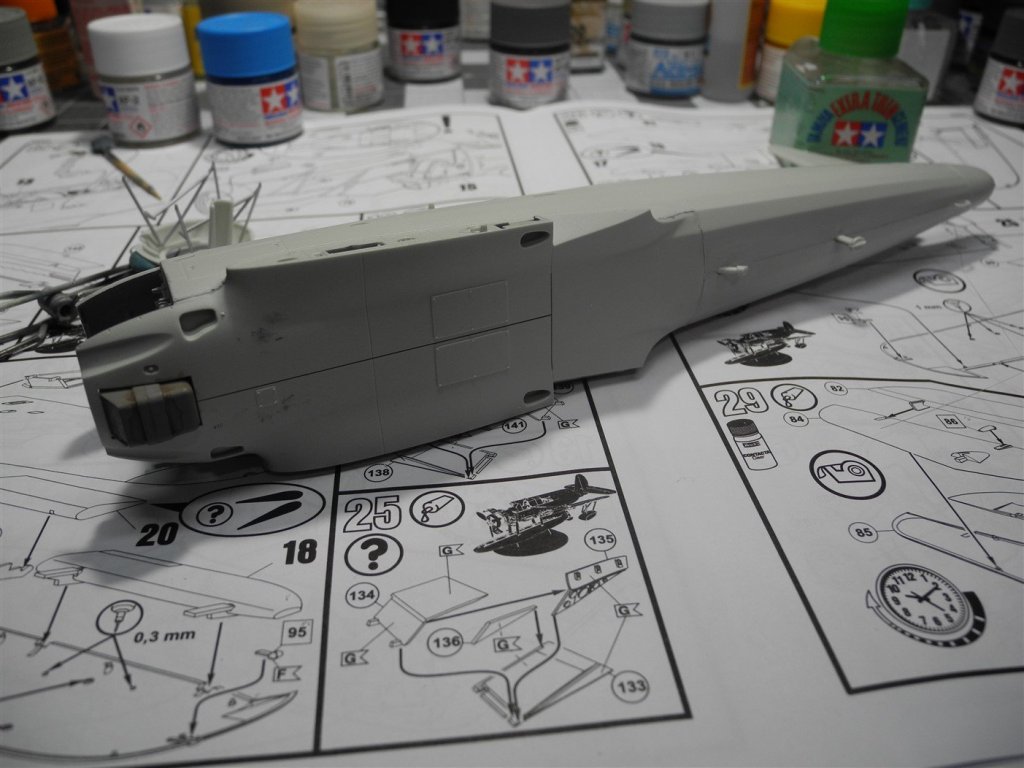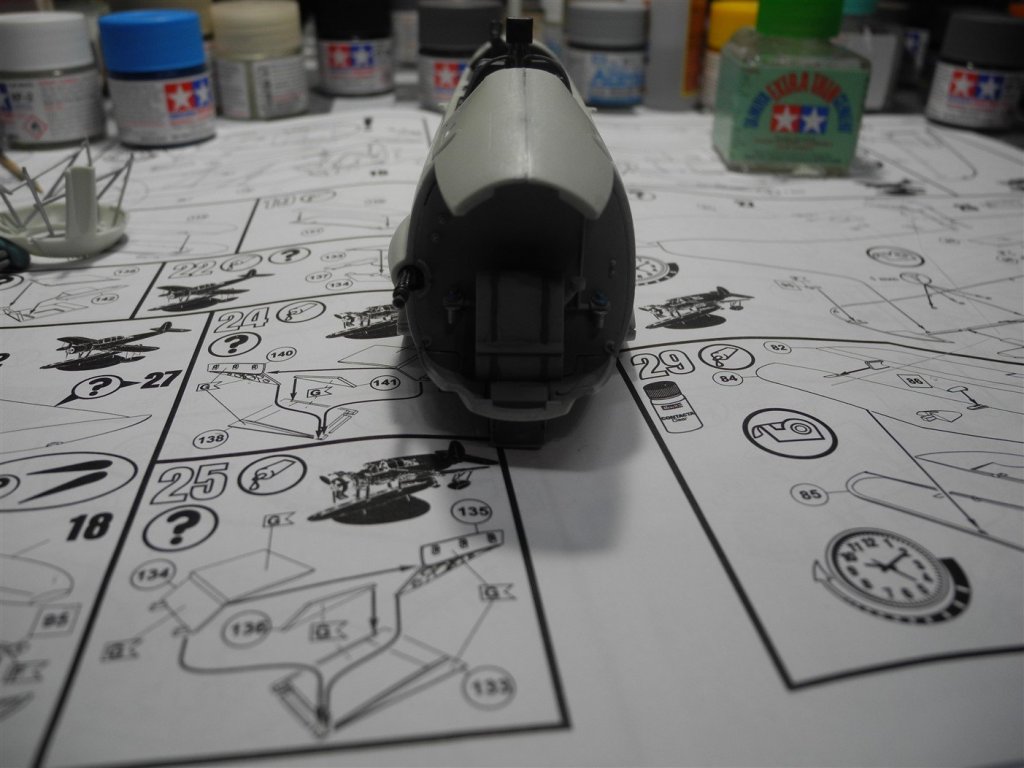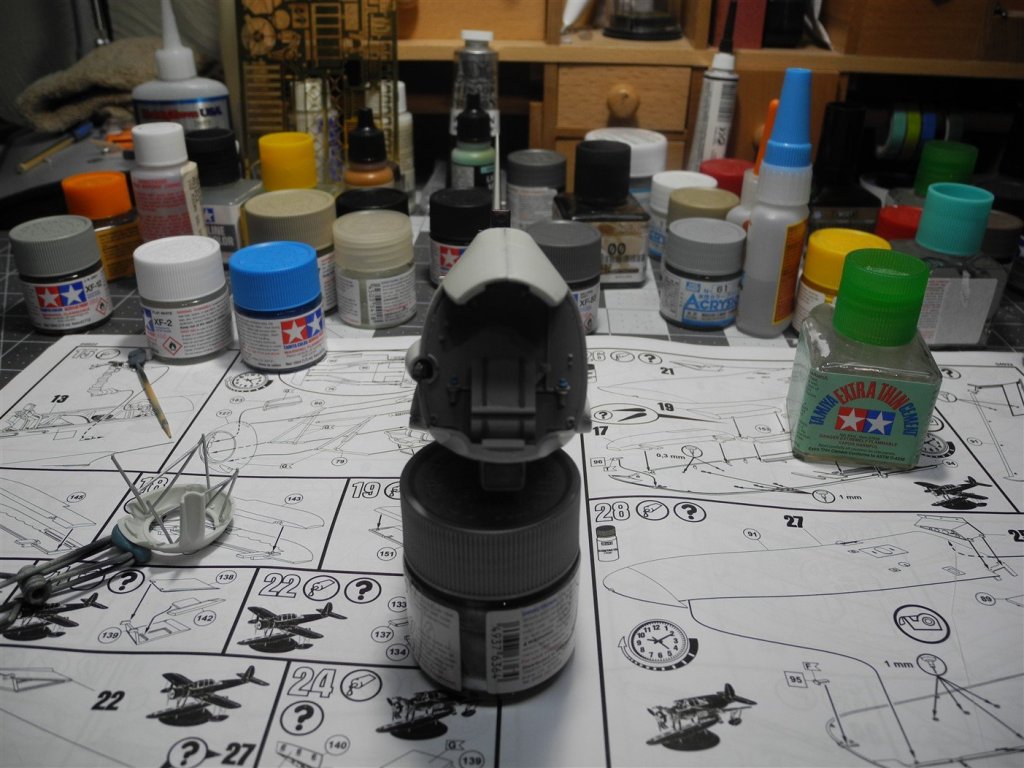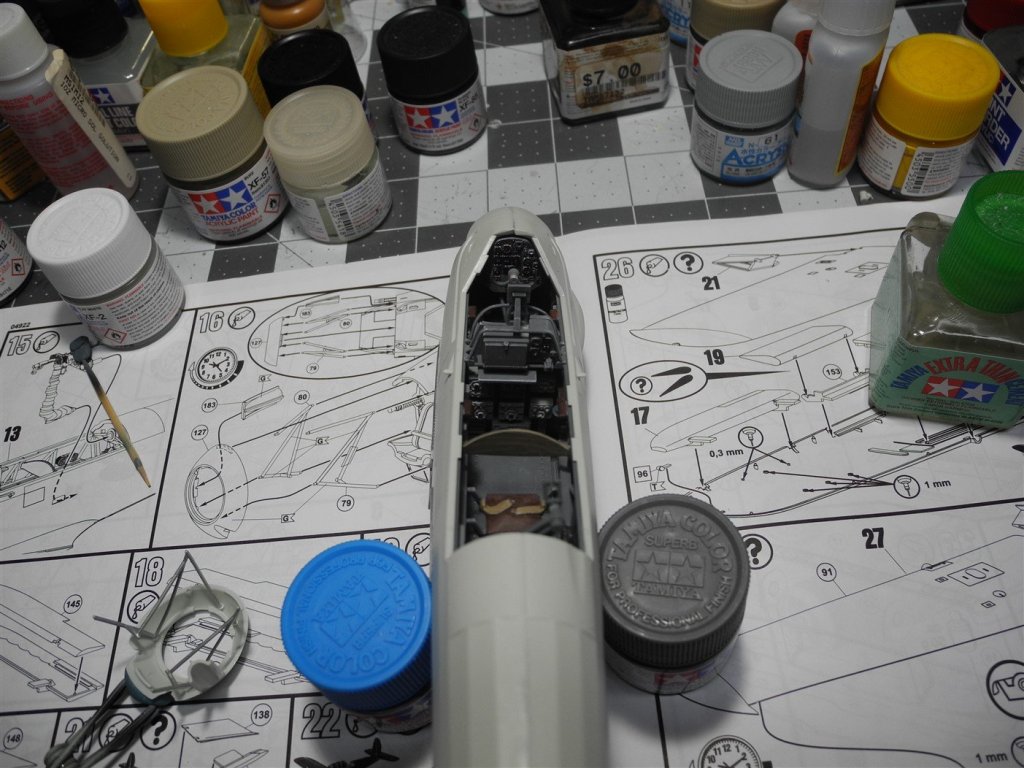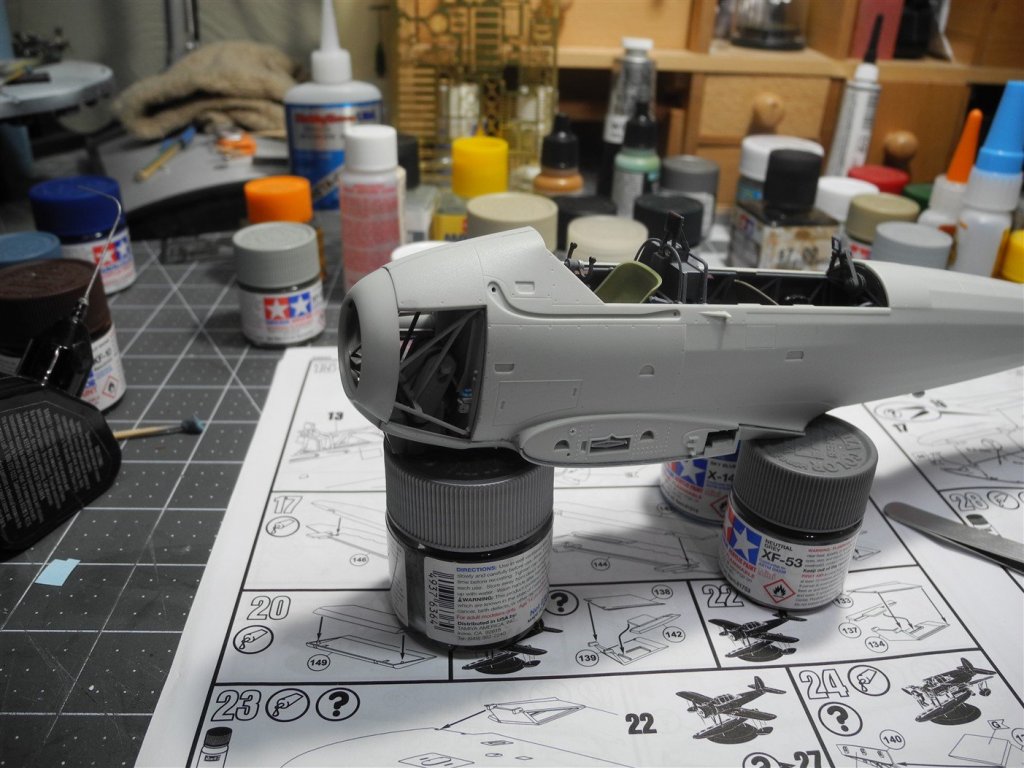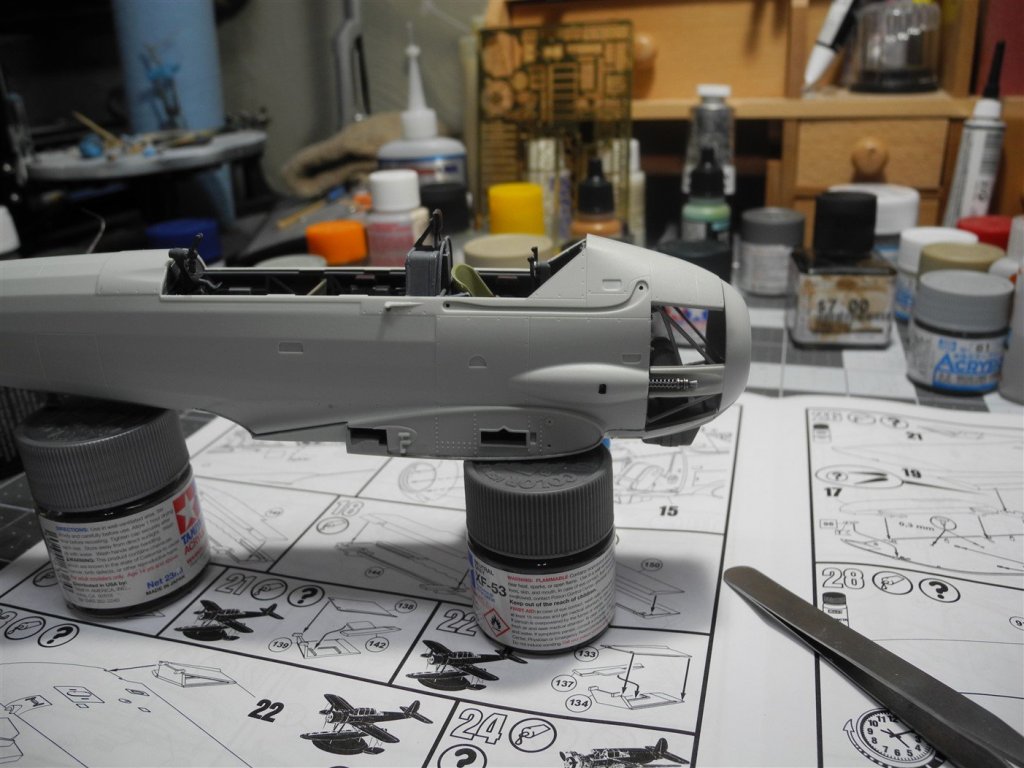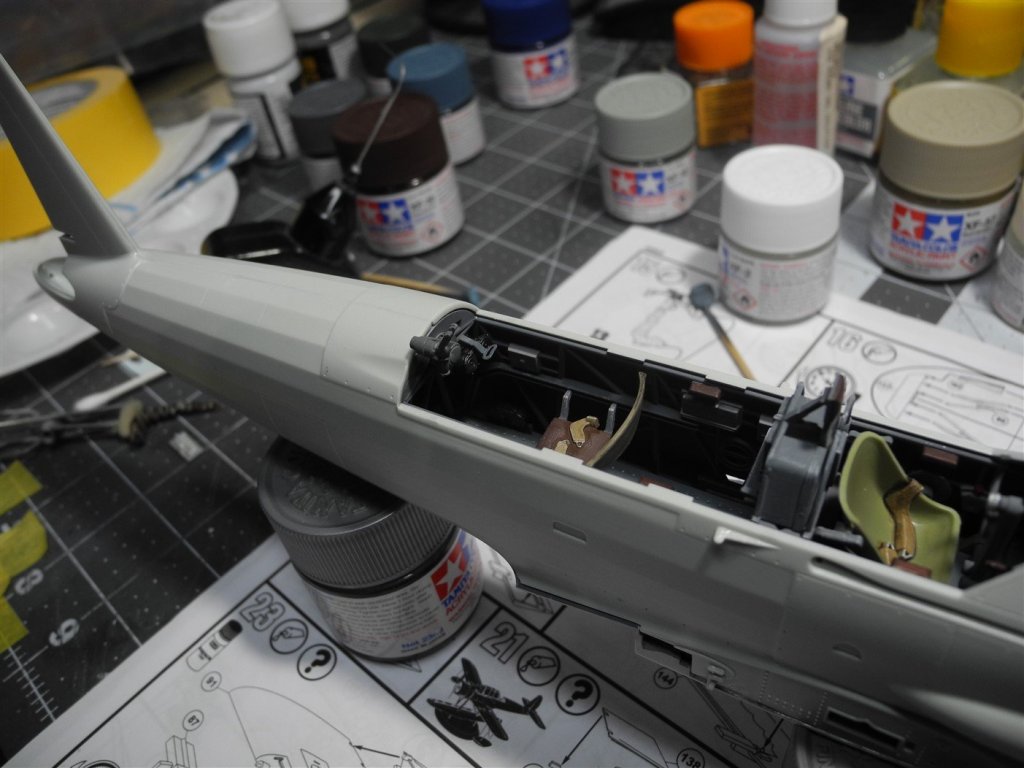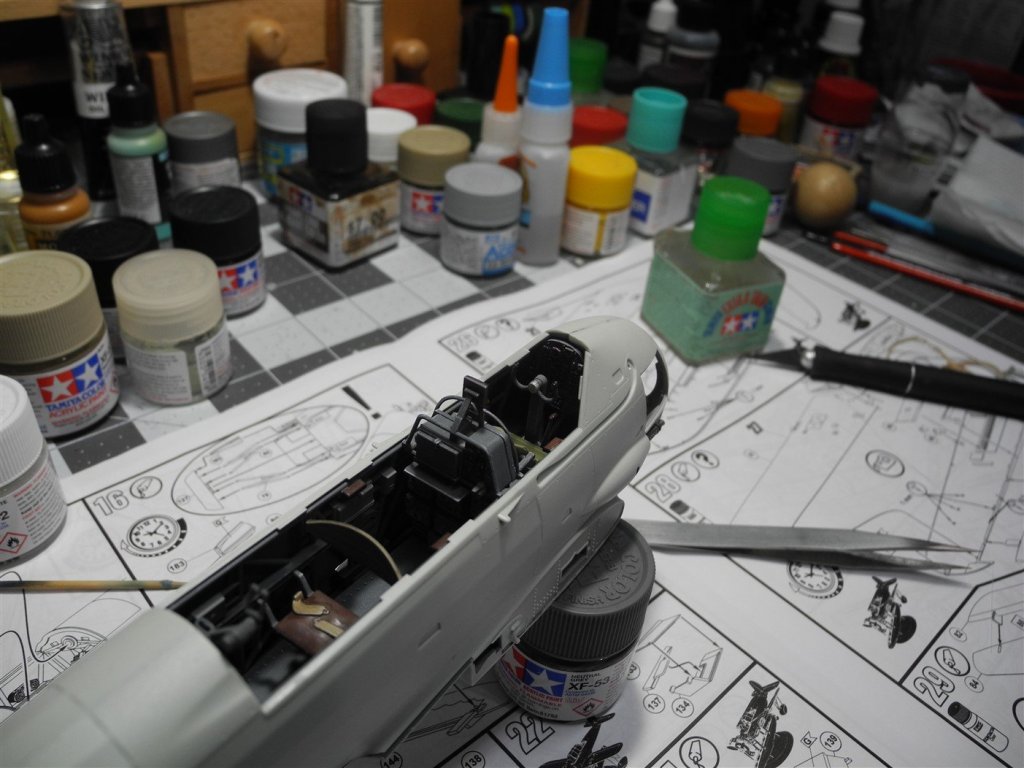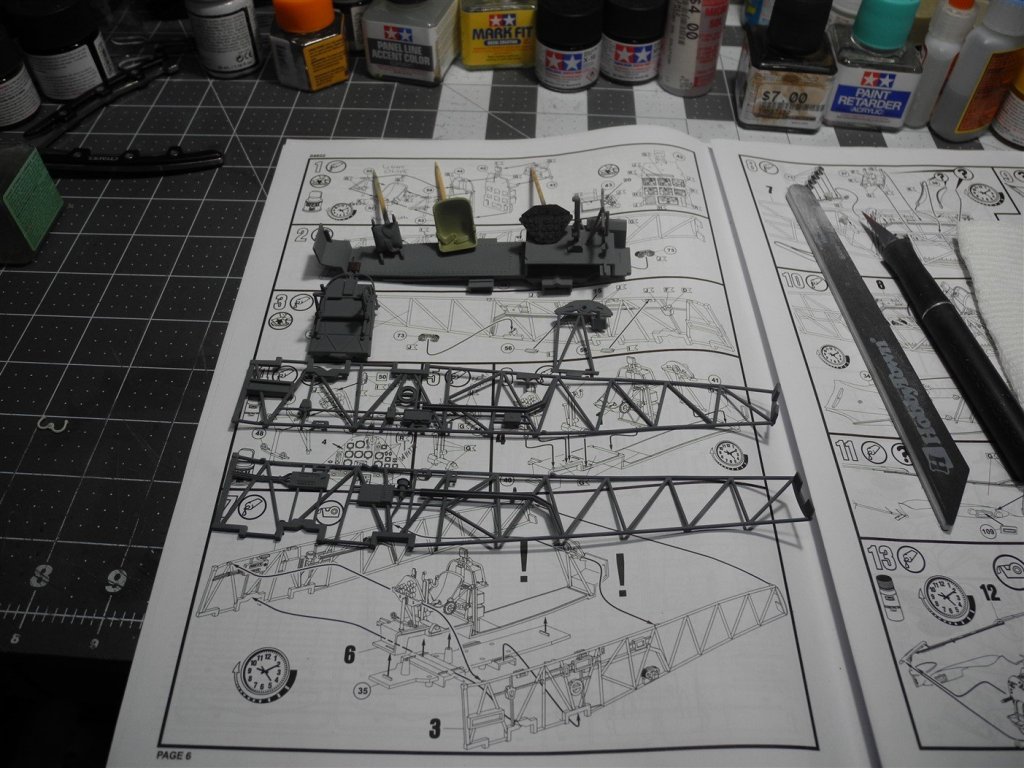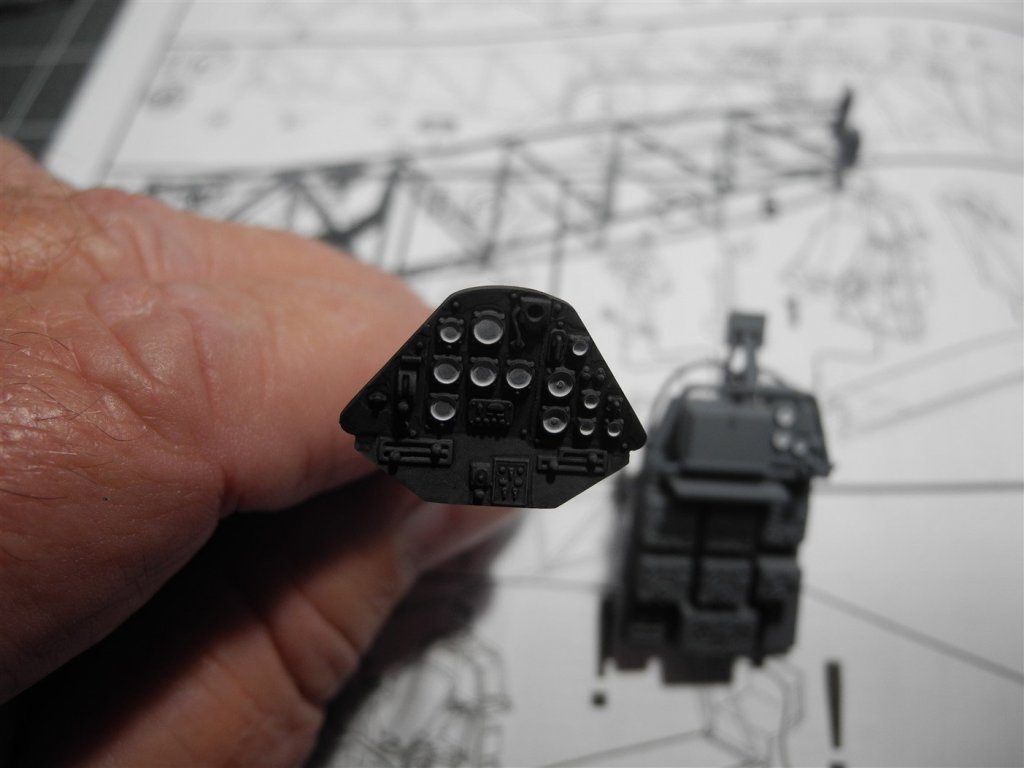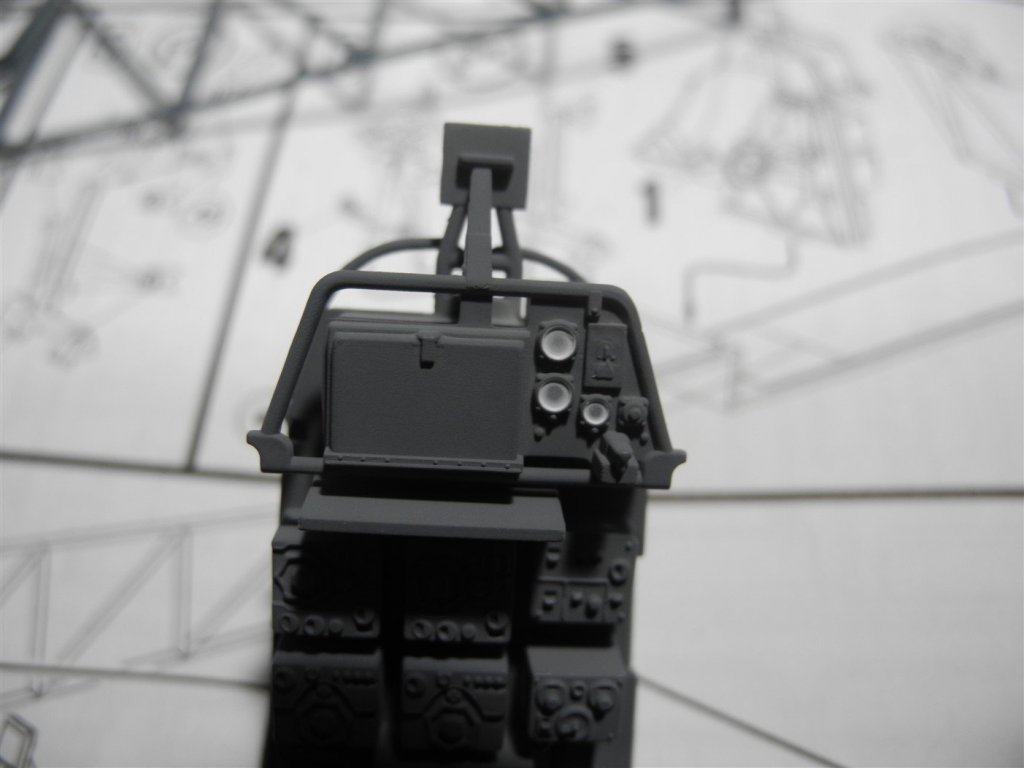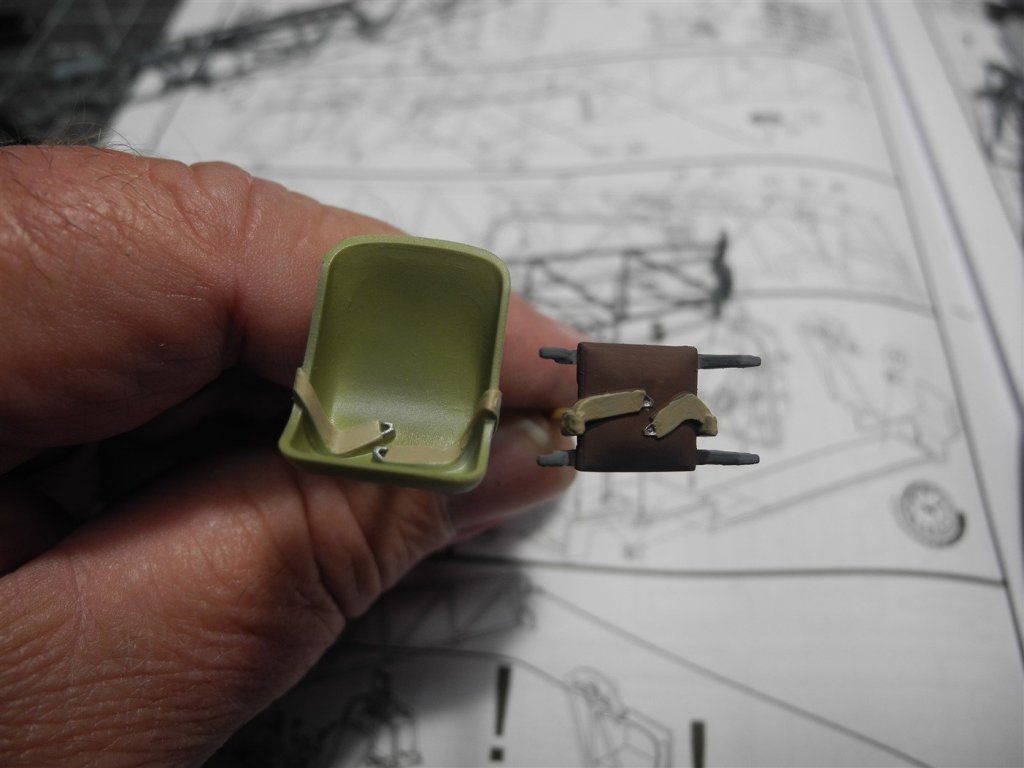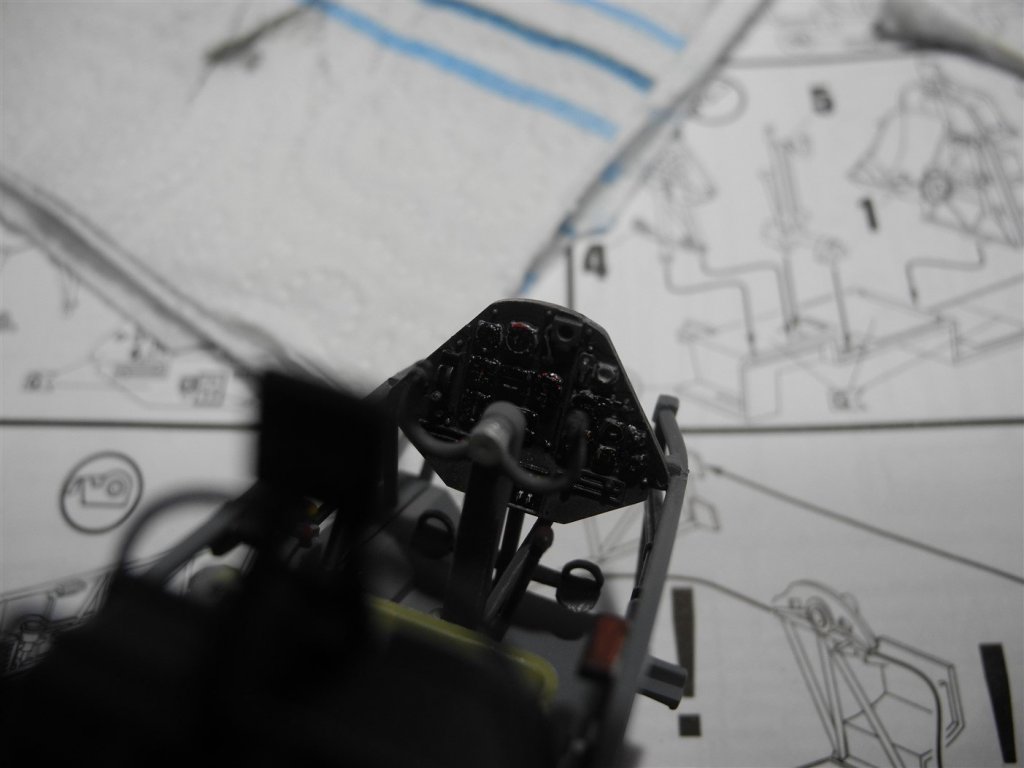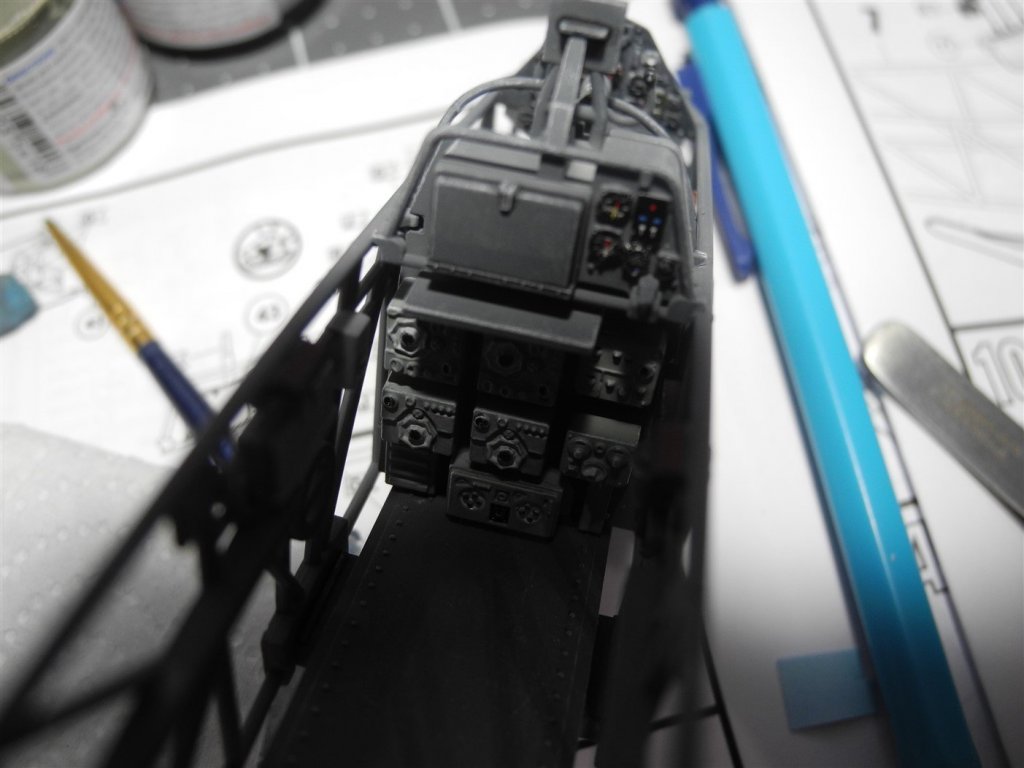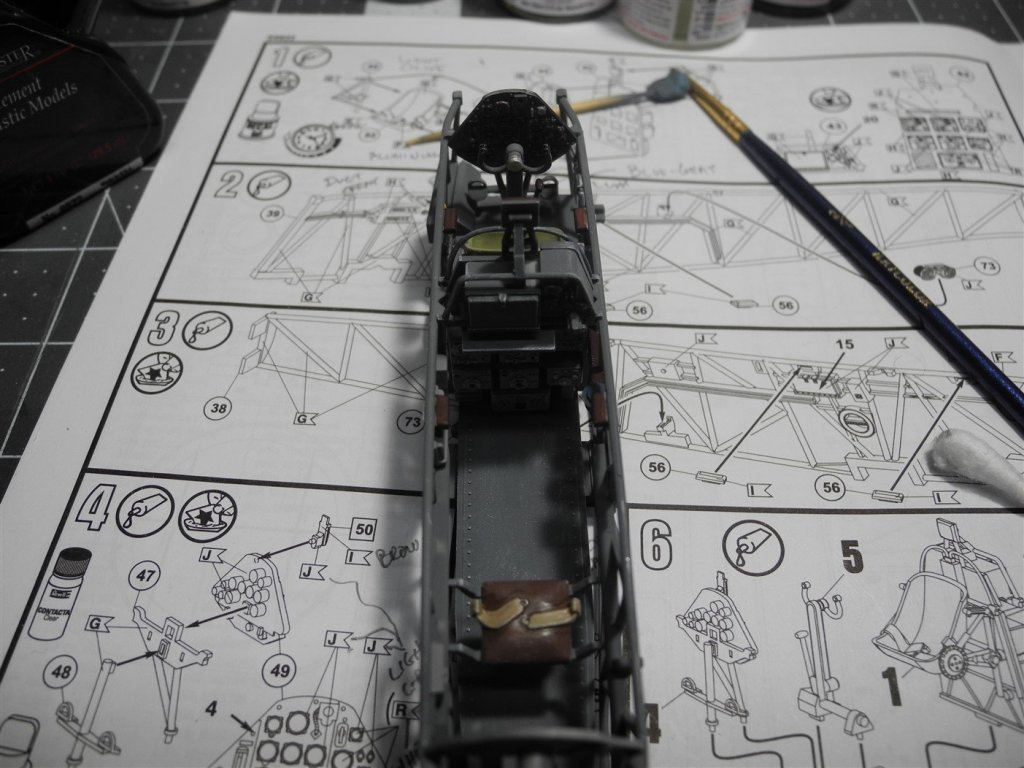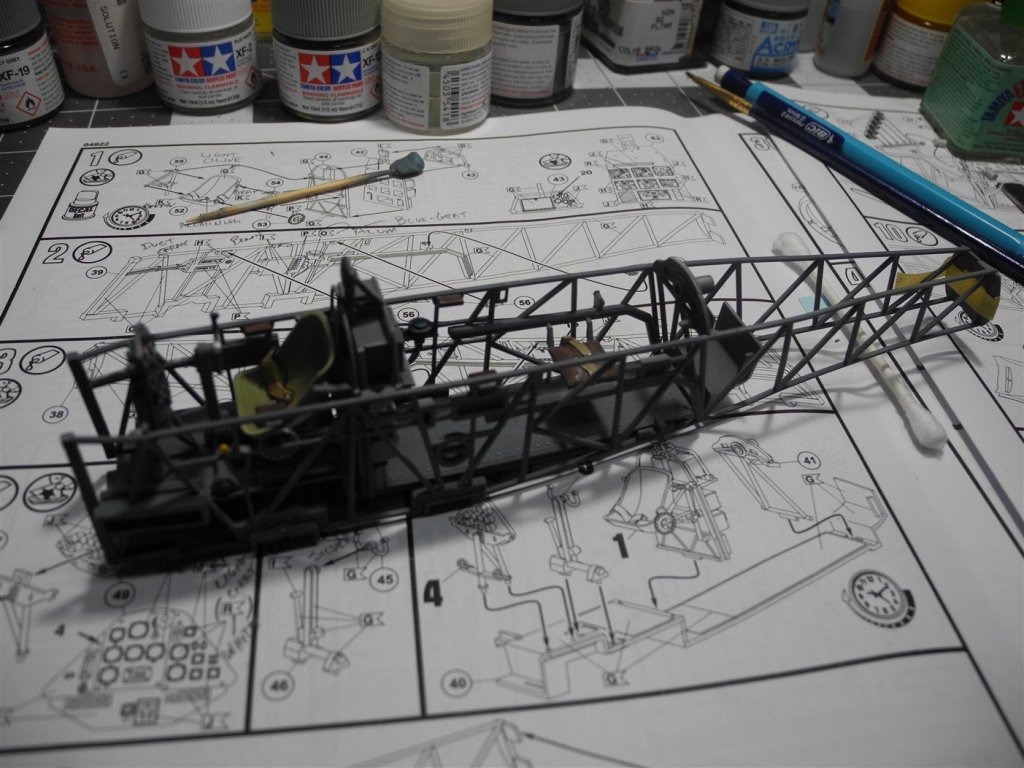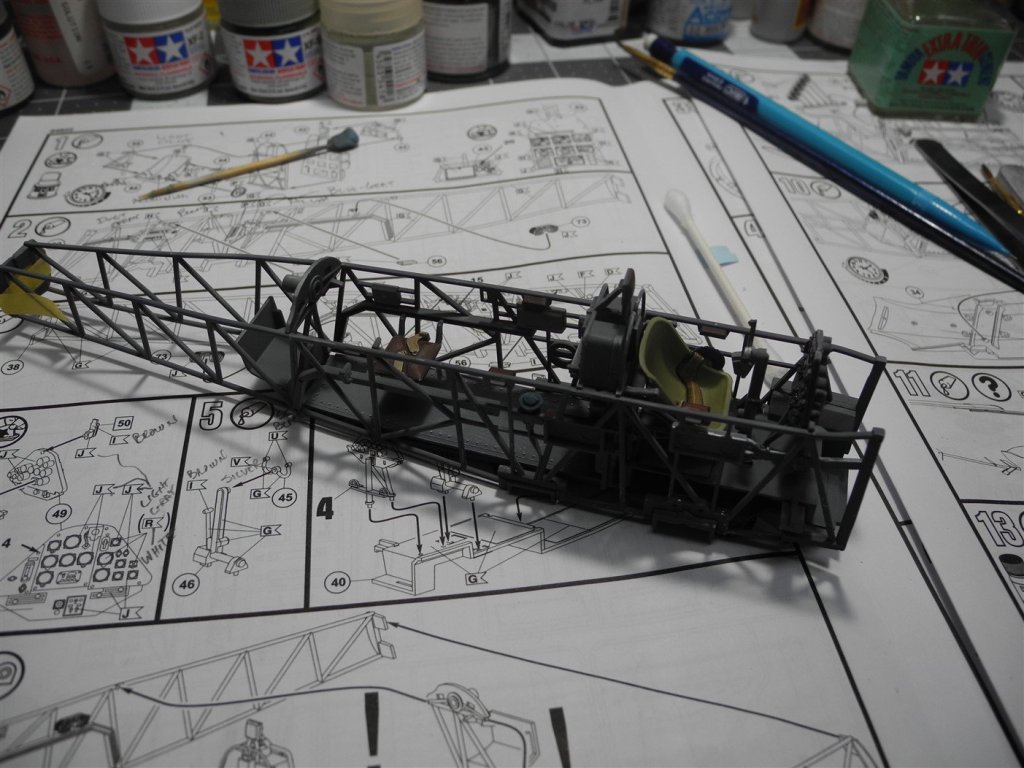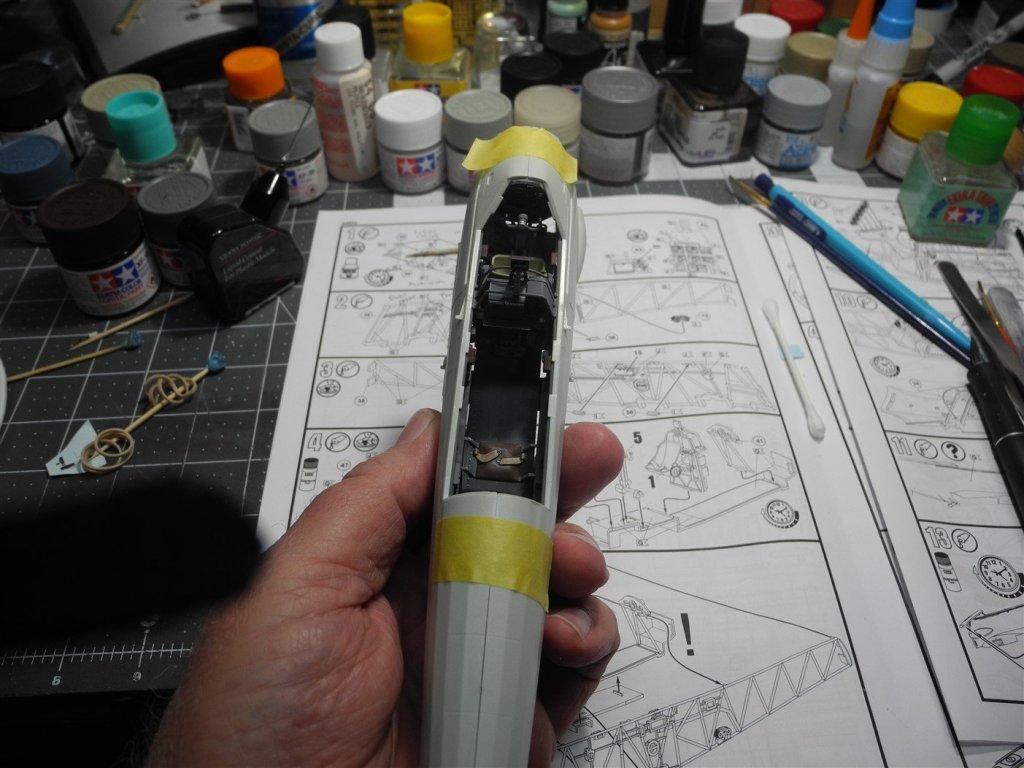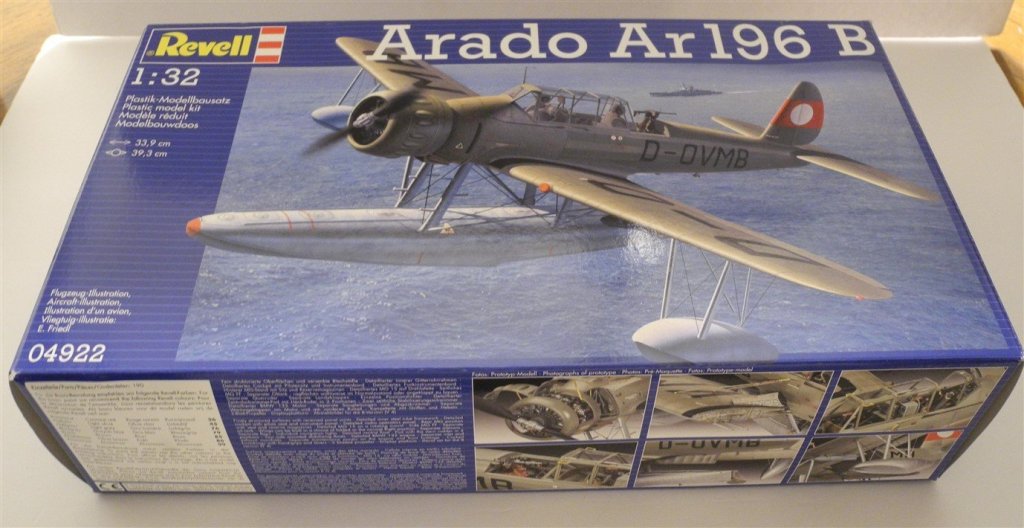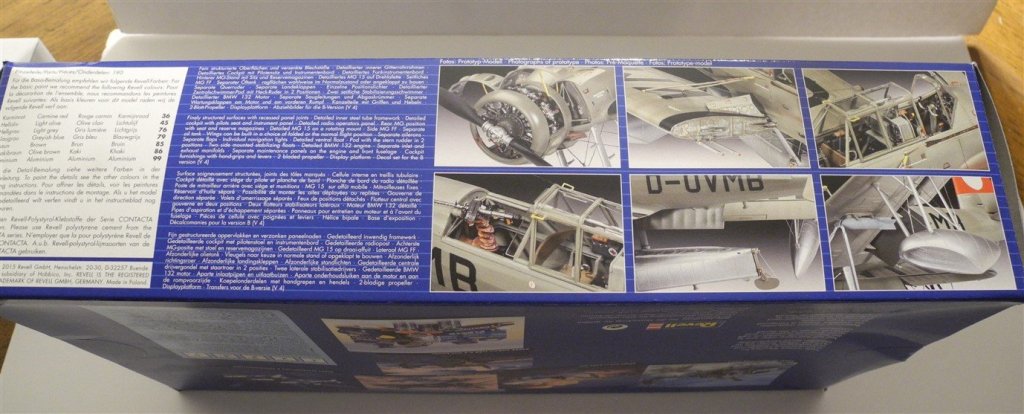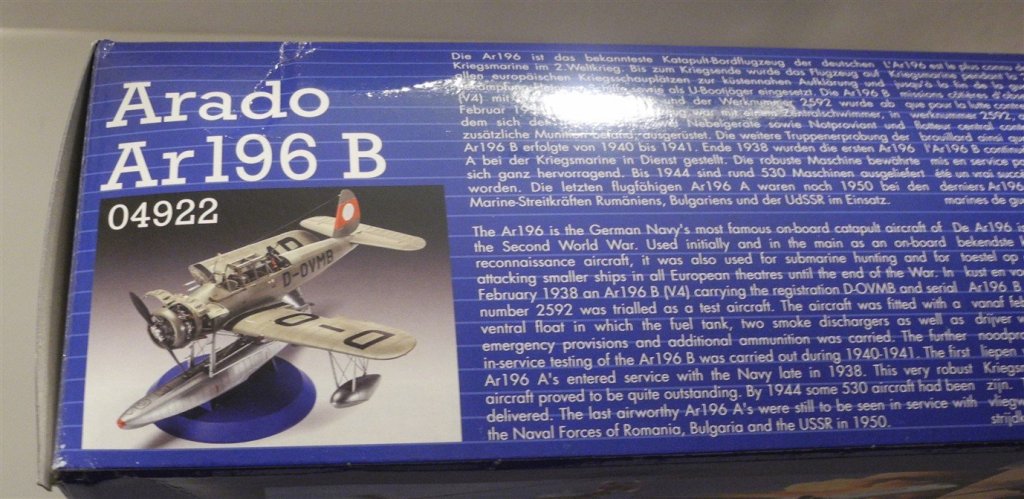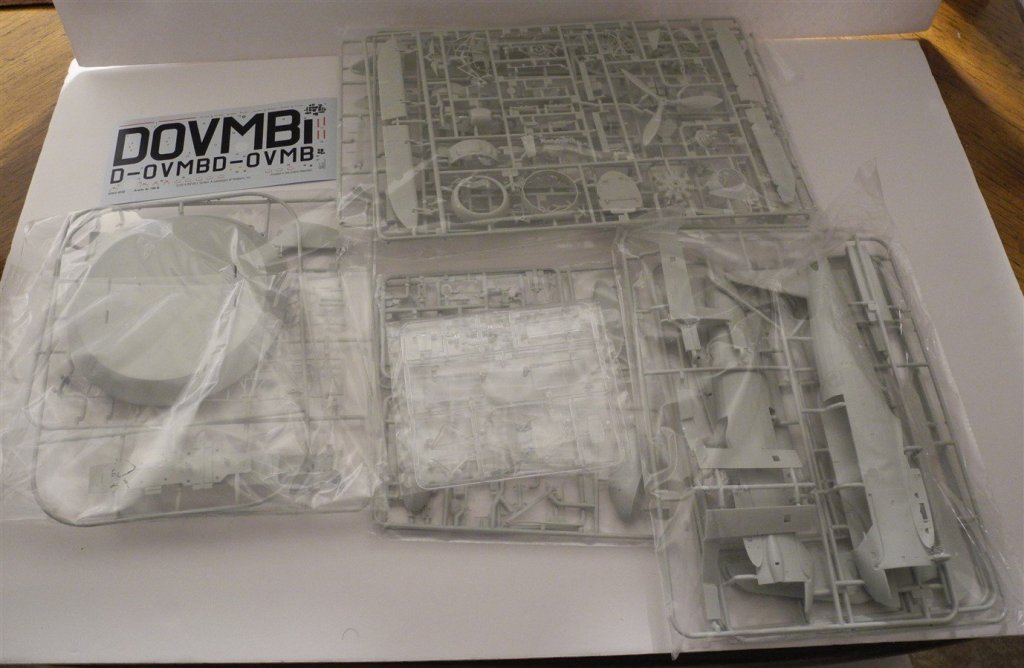-
Posts
7,725 -
Joined
-
Last visited
Content Type
Profiles
Forums
Gallery
Events
Everything posted by CDW
-
Both things are happening Mark. The glue softens the stretched sprue and then it can be gently pushed into the gap. By using the thin liquid cement, the plastic sprue sorta' melts into the gap. I use the back side of a small pair of tweezers to push the softened sprue into the gap. After it's all in place, I give it all another pass with liquid glue.
-
I agree whole heartedly. It's a lot of fun seeing the Black Pearl come alive with detail like this. You'll have one-of-a-kind when you're done with her.
-
While I was working on the next step of the Arado build, ran across one of the only fit issues I've found with this kit. It's a very minor but annoying gap that appears when the top of the main float is attached to the two sides. Not only is the gap annoying, but it would be very noticeable once the part is finished and painted. When you look closely, there is fine engraved detail all around the small gaps. Filler putty and sanding would potentially cause one to lose a lot of that detail. Over the years, I learned to use stretched sprue with thin liquid cement to fill in these small gaps without obliterating the surrounding detail. The following photos show the gaps and how I use the stretched sprue with thin liquid cement to fill them in. As you will see, the gaps are nicely filled without even sanding...and the surrounding details are all left totally intact. If you haven't tried this method of gap filling, give it a try. It's cheap, easy to do, and very effective.
-
🙂 Thanks Denis. I can bring and enter up to 10 models, with lots of different categories/sub categories available. I have attended this particular event for decades since it's so close to home. They used to hold the event at a hotel/resort on the gulf and we would always make a weekend stay of it. Wife and kids loved it back in the day. The vendor area alone is worth a visit - there are always bargains to be found.
-
Today the wings and flap assemblies were cemented together. The ailerons and flaps are separate units and can be posed as the builder desires. As I stated earlier, I had decided to build my Arado with one wing extended and one wing folded. Here my wings are dry fitted into place, posing for a photo shoot. At this point I have to say...this is one of the best fitting, beautifully molded kits I have seen at any price. This model is a huge bargain.
-
The fuselage has a right and left side, but the cockpit structure is first mated to a fuselage bottom which serves as the wing roots. The builder has the option in this sequence of construction to choose either folded wings or extended to flight position. If choosing folded wings, a few extra holes are drilled to facilitate the fold mechanisms. I chose to display mine with one wing folded and one extended. Next comes the installation of a forward bulkhead and fuel tank assembly attached to the forward most part of the tube structure/cockpit. Last thing done today was to prepare the engine mount and bracing to fit the forward bulkhead. While the fuselage is all cement joined together, I have dry fitted the engine mount for the time being for photographs. If one wanted to take the time to do so, a ton of detail could be added to this cockpit and engine bay/fuel tank bay. It's hard to see in the photos, but I have finished all the stock cockpit items with the exception of the rear machine gun. I will wait until near the end to install the machine gun as it will likely get knocked off while handling the model to the finish.
-
Outstanding work on this venerable old kit. Just found your build log tonight. Will read through it from start to finish.
-

Phantom Henry J Gasser by jct - FINISHED - 1/24 scale - PLASTIC
CDW replied to jct's topic in Non-ship/categorised builds
Exceptional details on the Hemi, JCT. Looks like you could turn the key and start it right up. -
Here is my first installment of building construction and painting photos. As is usual with most aircraft models, one starts with the cockpit first. The whole cockpit and structural tubing is painted in typical German RLM 02 (in this pre-1941 time period). Since I was out of that particular color, I substituted something close to it, albeit a little darker, with a Tamiya acrylic I had available. The seat is painted a light olive green using a Mr Hobby acrylic. Then various parts of the cockpit interior receive various shades of gray and brown paints to highlight various boxes, radios, switches, etc. The instruments are kit supplied decals, which poor lighting made it very difficult to see in my photos. ***Important Suggestion/Tip*** If you ever decide to use kit supplied decals to appoint your instrument panel, take the time and care to cut each and every instrument from the decal sheet and apply each one separately. A "clump" of instrument dials all bound together by one clear decal will look a jumbled and sloppy mess if applied as a whole to the panel face with raised dial details as this kit has. If the panel is flat with no raised detail, it would not matter and the entire instrument cluster decal would go down fine as a whole unit. Also, have some Solvaset or similar decal softener to make those decals settle into the raised dial detail. A drop of clear varnish on each instrument will give a great appearance after the decals are completely dry. The first dry fit of the fuselage halves with the cockpit inside looks great! Very nicely done molds by Revell. The fuelage has beautiful engraved detail as well as throughout the rest of the model.
-
I'll bet that work on the shrouds is tedious, but it sure is paying off. They look great. By the time you are finished with the Pearl, you'll be a pro on rigging and lots less apprehensive about doing the next tall ship.
-
Yes, I would be interested in seeing your model railroad hobby, for sure. It's something I always thought about doing myself, but never did. Since I retired 9 years ago, I have routine things I do every day and there are always yard work and other home maintenance items needed. Spent most of the day Saturday raking the yard, bagging the leaves, and cleaning out a flower bed to plant new flowers. More remains to be done. My modeling hobby I do "catch as catch can". Funny how retirement caused me to quit keeping track of hours spent, generally speaking. I get paid the same whether I'm marching or fighting. 😎
-
Having just completed the 1:48 scale Fairey Swordfish by Tamiya, thought I would stay with a naval aviation theme for my next build, the 1:32 Arado AR 196-B by Revell Germany. The model kit as produced recreates the prototype version of the Arado from the late 1930's. I would have liked to build it as an upgraded AR 196-A3, but I could not find any suitable production decal markings for it anywhere on the web. I just don't have time this go-round to scratch all those details so I will settle for building the kit as it is straight from the box. Maybe at another time someone will have produced the decals I want and I will do this model again as a Bismarck recce plane which is what I really wanted to do. Here are a few photos of the box and the parts inside the box (approx 190 of them). I am allotting myself 2 weeks to finish this project which seems to be a reasonable amount of time provided I don't run into unforeseen fit issues. Without further adieu, I will get started on the model.
-

Phantom Henry J Gasser by jct - FINISHED - 1/24 scale - PLASTIC
CDW replied to jct's topic in Non-ship/categorised builds
Great scratch building tips right there!
About us
Modelshipworld - Advancing Ship Modeling through Research
SSL Secured
Your security is important for us so this Website is SSL-Secured
NRG Mailing Address
Nautical Research Guild
237 South Lincoln Street
Westmont IL, 60559-1917
Model Ship World ® and the MSW logo are Registered Trademarks, and belong to the Nautical Research Guild (United States Patent and Trademark Office: No. 6,929,264 & No. 6,929,274, registered Dec. 20, 2022)
Helpful Links
About the NRG
If you enjoy building ship models that are historically accurate as well as beautiful, then The Nautical Research Guild (NRG) is just right for you.
The Guild is a non-profit educational organization whose mission is to “Advance Ship Modeling Through Research”. We provide support to our members in their efforts to raise the quality of their model ships.
The Nautical Research Guild has published our world-renowned quarterly magazine, The Nautical Research Journal, since 1955. The pages of the Journal are full of articles by accomplished ship modelers who show you how they create those exquisite details on their models, and by maritime historians who show you the correct details to build. The Journal is available in both print and digital editions. Go to the NRG web site (www.thenrg.org) to download a complimentary digital copy of the Journal. The NRG also publishes plan sets, books and compilations of back issues of the Journal and the former Ships in Scale and Model Ship Builder magazines.

.jpg.7e80607770d9078b2f0b470e8c9c33ac.jpg)

